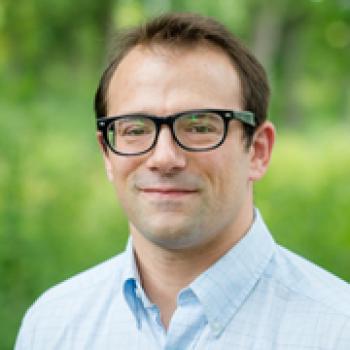Biography
Michael Bishof is an Assistant Physicist in the Physics Division working in the Medium Energy Physics group and Argonne’s Trace Radioisotope Analysis CEnterR (TRACER) .
I’m looking for a motivated graduate students to work on quantum simulation. Interested students should email me!
Within the Medium Energy Physics Group, Michael is working to perform quantum simulations of strongly interacting quantum systems that are relevant to nuclear physics. His system uses ultracold neutral Yb atoms trapped in re-configurable optical tweezer traps. Neutral atoms trapped in re-configurable arrays are an exciting new platform for quantum simulation and computation that are scalable, have long coherence times and can implement strong interaction “on-demand” by coupling to Rydberg states. Yb atoms, in particular, offer several advantageous properties that will allow us to perform simulations with reduced resource requirements.
As a member of TRACER, Michael works to improve the atom trap trace analysis (ATTA) technique and expand its scientific impact. By detecting rare isotopes of krypton in a magneto-optical trap, ATTA can determine the residence time of ground water and polar ice at time scales outside the range of radiocarbon dating. TRACER recently built a second ATTA instrument to be able to process a greater number of environmental samples and to allow the original system to be used for research that will improve the ATTA technique. Michael is currently investigating a new method to populate noble gas atoms into the metastable state that is required for laser trapping. This work could dramatically improve the sensitivity of the ATTA technique.
Michael earned his PhD in physics from the University of Colorado at Boulder in 2014. He worked under the supervision of Prof. Jun Ye at JILA, a joint institute between the University of Colorado and the National Institute of Standards and Technology. His thesis research centered on using ultracold, optical-lattice-trapped strontium atoms to develop the most stable and accurate clock and to study many-body physics. Michael joined the Medium Energy Physics Group in 2014 as a Director’s Fellow and contributed to the first ever measurement of the Electric Dipole Moment (EDM) of 225Ra. Subsequently, he improved this measurement by over an order of magnitude.
